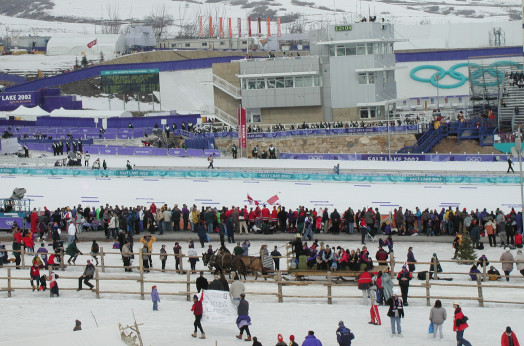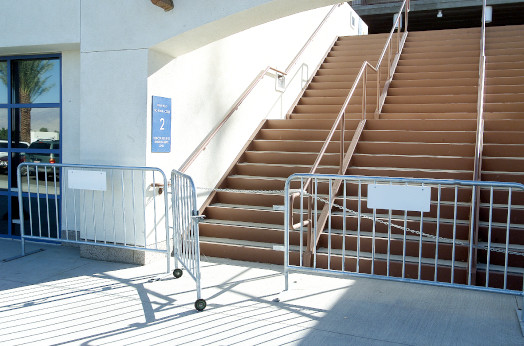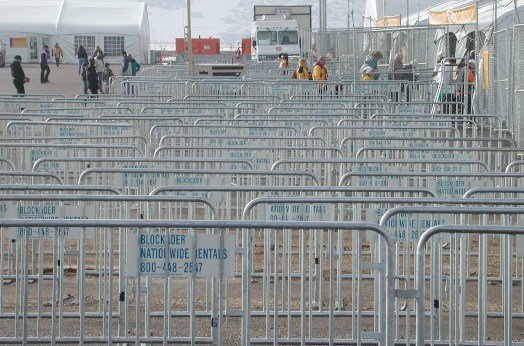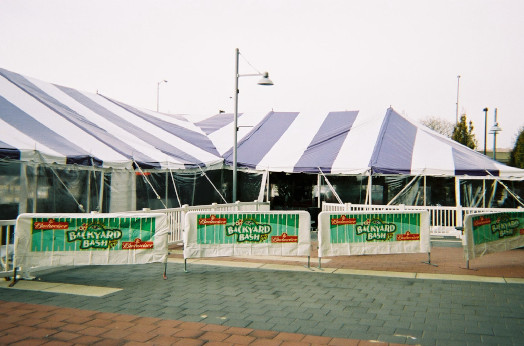Developing a Crowd Control Management Plan (Updated for 2024)

The larger a gathering or event is, the more important crowd control becomes. Every event requires some level of crowd control or crowd management in order to ensure the safety of everyone and overall success for the event. If event visitors don’t know where things are and no plan is in place, bottlenecks occur and crowds can become unruly.
Poor crowd control can cause injuries and other problems, or even exacerbate issues and emergencies. These issues can almost never be resolved in real time, especially with large crowds. In order to minimize and prevent crowd control problems, event coordinators must develop effective crowd control management plans.
So, what goes into developing a crowd control management plan? Let’s explore four important crowd control questions to get you started:
What is the meaning of crowd control?
Crowd control doesn’t really mean having true control over a crowd. Most of the time, effective crowd control revolves around efficiently moving traffic throughout the event. Whether someone is trying to enter, exit, or get to a specific area, effective crowd control helps that happen without a hitch.
Without crowd control, the success of an event is put into question. Paying customers become upset, avoidable problems arise, and the event is a failure.
The trick is to get crowds to do what you need them to do without creating bottlenecks and other problems. Clearly defining boundaries, entries, exits, pathways, and restricted areas helps traffic flow efficiently and safely. However, much more goes into the planning process than simply defining entries and exits.
What is a crowd control management plan?
Any time a large group of people gathers, there is the potential for disaster. Injuries and even deaths have occurred at major events in the past, which is why it’s essential for event coordinators to understand the risk involved and develop a crowd control management plan that reflects that understanding.
Every event is different, which is why organizers should consider these factors at the start of the planning process:
- Event type
- Facility design and location attributes
- Expected crowd
- Safety and security concerns
- Parking, entries, and exits
- Ticketing, restrooms, and concessions
- Necessary training
- Effective tools and practices
A half-baked crowd control management plan is going to fall apart under duress, which is why experienced event coordinators prepare well in advance. During the event, a plan must be flexible enough to adapt to changing conditions. In addition, regrouping after the event can help ensure better planning for future events.
Taking all of these factors into account should help an event organizer develop a solid crowd control management plan. If every aspect of the event is properly planned and accounted for, protocols are put in place, and workers are properly trained, the event should go smoothly.
Elements of a Crowd Control Plan

Know your crowd
What is the intent of your crowd? Knowing the state of mind of your attendees will help you make decisions on the best crowd control products to use at your event or at your event attractions. Belt stanchions offer quick and easy setup but are not great for massive crowds who are waiting at an entrance way. Steel barriers may be a better solution for that type of line.

Entrances & exits
A lot of events are made up of entrances and exits. If you think of a theme park, your visitors are spending most of their time standing at an entrance line. A line to get in, a line to ride amusement park rides, a line to eat, a line for the bathroom, etc.
When building your crowd control management plan, create a list of all your entrances and exits. Try to estimate the demand of each entrance and develop appropriate line queues for each one. For the main entrance, develop a plan to keep visitors safe and moving through a steady, organized pace.
Emergency Plans
How will you capture Your Crowd’s attention?
During an event there will likely be instances where you will need the attention of your attendees. It could be to notify them that they are next in line or, in the case of an emergency, you may have to find a way to demand their attention from environmental distractions. For the first case, often times, visual cues such as signage are adequate, “Line Starts Here” or “Please stand behind the line”.
During an emergency, there are often times distractions and attendees are closer to a fight or flight state of mind. In cases like this, it is necessary to have a more direct communication strategy. To help do this, you may want to dramatically change the current environment.
- Turn the lights on in a dark room or flash the lights on and off in a light room.
- Turn off all music or sound an alert.
As you get the attention of attendees, you can deliver instructions via an intercom or from your trained staff to direct them to the exits.
- Use signage to control crowds
- Use trained staff members to control crowds
- Use an intercom to control crowds
- Use an App or SMS to influence crowd behavior
Don’t forget the parking area. This is an important area of exit as well and can turn your event exit into a standstill if not organized.
Know the crowd control process
This is the most important part of your crowd control management plan. Make sure every person working the event knows what to do in the event of an emergency.
- How will emergency personnel access the event grounds?
- In the case of an emergency, what is the chain of command?
- What is the exit strategy for your attendees?
- How will directions be communicated to your team and to attendees?
Why are crowd control management plans important?
Crowd control management plans are important for a variety of reasons, including event success, safety, and security. An event’s goals are much more likely to be achieved when a crowd control management plan is in place. Poor crowd control leads to an angry crowd, hassled workers, and a variety of other issues. With crowds being the measure of success for most events, an angry or frustrated crowd usually leads to poor results.
Crowd control isn’t much different from highway traffic. When traffic gets backed up, nobody is happy. A good crowd control management plan helps event visitors move efficiently throughout an event, minimizing confusion and congestion.
Crowd control becomes even more important in the event of an emergency or disaster. Safety and security are two huge concerns during the planning process, and organizers must have a plan to keep everyone safe. Accidents happen, injuries occur, but having a way to minimize the impact of these problems is the mark of a good plan. When a plan isn’t in place or protocols aren’t being followed, emergencies can become much more difficult to contain.
How do you control big crowds?
Large events require crowd control barriers, barricades, signs, and other tools to ensure success. Proper use of crowd control barriers is a great way to manage and direct a crowd, and barrier covers and other signage helps effectively communicate important information. All of these pieces fit together to complete your crowd control management plan.

Barriers and Barricades
Though barriers and barricades are sometimes used interchangeably, event organizers should know the difference between them. Barricades are perfect for stopping or containing traffic, like what is used at a parade or a concert. Barriers, which come in a variety of types, are more of a mental barrier and are meant to direct traffic. These are great for managing the flow of traffic during an event, whether the crowd is being funneled in and out of the event or just to another location.
The use of crowd control barriers and barricades is vital to the success of an event plan, especially with a large crowd. Different types of barriers are used for different situations, so organizers must understand how to use them effectively.

Barrier Jackets and Signs
As important as barricades and Barriers are to an event, barrier jackets and general signage is just as essential. With large crowds, it’s not always easy to find an employee or worker to ask for directions or help. Using signage in conjunction with the barriers is a great way to keep lines moving and minimizing bottlenecks.
Developing a crowd control management plan is a constantly evolving process. Even when an event is over, organizers must learn from their mistakes and apply necessary changes for future events. No plan is complete without crowd control barriers, which is why Blockader works closely with organizers to supply the necessary combination of barricades and signage for each event. Contact us today to talk to a specialist about crowd control, line management, and other event concerns.
Security Aspects to Consider
Security Considerations
Enhancing security involves:
- Regularly inspecting barriers for integrity.
- Implementing surveillance cameras at strategic points.
- Training staff to handle security threats.
- Using barriers to create secure perimeters and controlled access points.
- See our EntraTurnstiles division for even more security considerations for your complete crowd control management plan.
Integrating Other Products for Comprehensive Solutions
Integrate Products From Our Other Divisions to Complete Your Crowd Control Management Plan
For a complete crowd control solution, consider products from our other divisions:
- Movit Barricades: Ideal for plastic pedestrian barriers.
- Portable Fencing Division: Offers plastic and steel event fencing products.
- Welded Wire Division: Provides perimeter patrol construction fencing.
These additional products can enhance security, manage traffic, and improve overall crowd control at your events.
Conclusion
Developing a crowd control management plan is an ongoing process. Learn from each event and apply changes for future improvements. Tamis Corporation works closely with event organizers to supply the necessary combination of barricades and signage. Contact us today to speak with a specialist about your next project.

Good information. Need more security aspects.